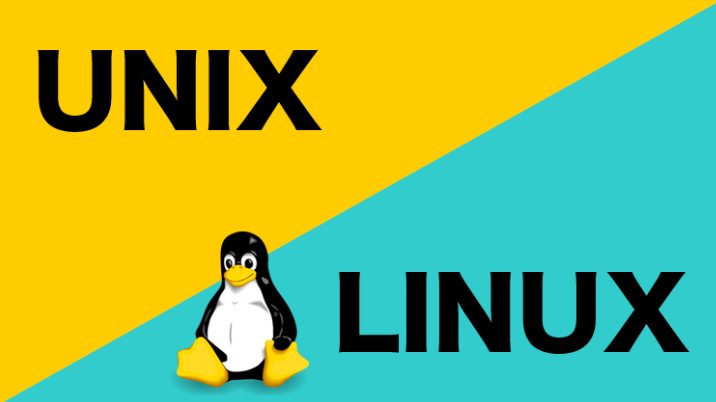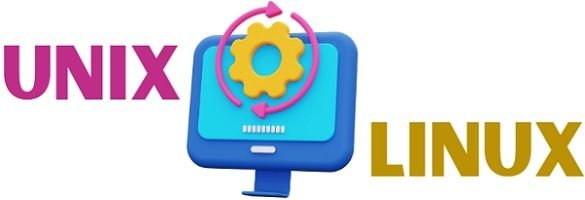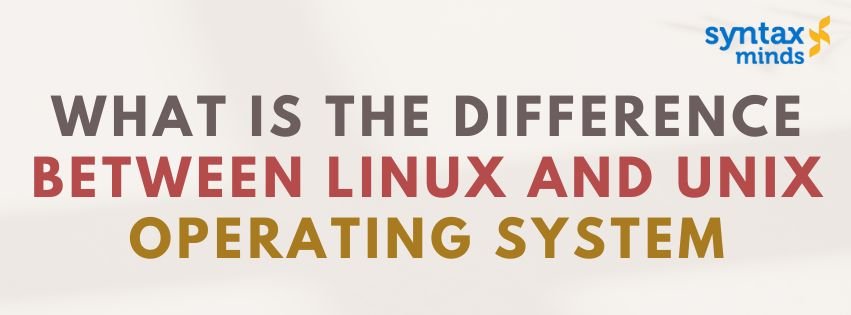Table of Contents
ToggleDifference Between Linux and UNIX Operating Systems
The terms Linux and UNIX are often used interchangeably, but they refer to different operating systems that share many foundational similarities. Both are known for their multitasking and multiuser capabilities, but there are key differences between the two, especially when it comes to licensing, cost, system architecture, support, and user base. In this article, we will explore the primary differences between Linux and UNIX in detail.
Origin and History
UNIX:
UNIX was developed in the late 1960s and early 1970s at AT&T Bell Labs by Ken Thompson, Dennis Ritchie, and others. Originally designed to be a simple, elegant, and powerful operating system, UNIX was written in the C programming language, making it portable and easy to modify. Over the years, UNIX has been modified and adapted to suit the needs of various organizations and hardware platforms, leading to the creation of many proprietary versions, including AIX, HP-UX, Solaris, and others. UNIX’s historical influence on modern operating systems cannot be overstated.
Linux:
Linux, on the other hand, was created by Linus Torvalds in 1991 as a free and open-source alternative to UNIX. It was designed as a UNIX-like operating system, built around the Linux kernel. Torvalds initially developed Linux as a hobby project but soon released it to the public under the GNU General Public License (GPL), enabling anyone to use, modify, and distribute the software freely. Since then, Linux has grown into one of the most widely used operating systems in the world, with contributions from thousands of developers.
Licensing and Cost
UNIX:
A significant distinction between UNIX and Linux is licensing. UNIX operating systems are often proprietary and require the purchase of licenses for both the software and support. Major UNIX vendors, such as IBM’s AIX, Oracle’s Solaris, and Hewlett-Packard’s HP-UX, charge organizations for licenses, often for each user or processor. This makes UNIX systems costly, especially for large organizations with many users or extensive hardware infrastructure.
Additionally, the source code of most UNIX systems is not publicly available, which limits the ability of users to modify the system to their specific needs. Users are dependent on the vendor for updates and patches.
Linux:
In contrast, Linux is open-source and free to use. The Linux kernel is released under the GNU General Public License (GPL), meaning that anyone can download, modify, and redistribute it. While Linux itself is free, some commercial distributions (such as Red Hat Enterprise Linux (RHEL) or SUSE Linux Enterprise Server (SLES)) may offer paid support, services, and additional enterprise features. However, the vast majority of Linux distributions, such as Ubuntu, Debian, and Fedora, are freely available to anyone.
Linux’s open-source nature encourages collaboration and contributions from a global community, making it a highly flexible and adaptable operating system.

System Architecture and Kernel
UNIX:
UNIX systems use a monolithic kernel, meaning that the core of the operating system handles a wide range of tasks, including process management, memory management, and device control. UNIX typically relies on system calls to interface with its kernel and manage system resources. Many UNIX systems are customized for specific hardware and are often designed to run on specialized workstations or server platforms.
Since there are many different UNIX versions, each variant may have specific optimizations and architecture, which can lead to compatibility issues between systems.
Linux:
Linux is also based on a monolithic kernel, but it differs from traditional UNIX in that the Linux kernel is highly modular, allowing users to load and unload kernel modules on the fly, depending on their needs. This modularity provides flexibility in how the system is configured and optimized.
One of Linux’s defining features is that it can run on a wide variety of hardware platforms, from smartphones and embedded devices to servers and supercomputers. Unlike UNIX, Linux distributions are typically designed to work across different hardware architectures, making it much more versatile in terms of deployment.
Customizability and Flexibility
UNIX:
UNIX, being proprietary, is generally not as customizable as Linux. Organizations typically use pre-built versions of UNIX tailored for specific hardware and configurations. Customization is possible, but it is often limited by vendor support and licensing agreements. Additionally, UNIX systems tend to follow stricter standards, which means there is less room for end-users to modify the underlying system.
Some UNIX versions, such as BSD (Berkeley Software Distribution), are open-source and offer more freedom for modification, but these are less common than the proprietary UNIX systems.
Linux:
Linux shines in terms of customizability. Since the source code is open, users can modify the kernel, system libraries, and applications to suit their needs. Linux offers hundreds of distributions (distros), such as Ubuntu, CentOS, Arch Linux, and Debian, each designed with specific use cases in mind. For instance, Ubuntu is user-friendly and suitable for beginners, while CentOS and RHEL are tailored for enterprise environments, and Arch Linux provides a minimalist approach for advanced users.
Linux’s flexibility extends to its support for various desktop environments (like GNOME, KDE, or XFCE) and window managers, which allow users to choose the interface that suits them best. This makes Linux appealing to a wide range of users, from hobbyists and developers to large enterprises.

Security and Support
UNIX:
UNIX has a long history of security and reliability, particularly in enterprise environments. It was designed with multiuser and multitasking capabilities in mind, which included strong user management and file permissions. However, the security features of UNIX systems can vary depending on the vendor. Some UNIX versions, like Solaris, provide advanced security features such as Role-Based Access Control (RBAC) and ZFS encryption. Support for UNIX systems is often provided by the vendor, and support contracts can be expensive.
Linux:
Linux is widely regarded for its security features, and many distributions offer robust security measures out of the box. These include user authentication, file permissions, AppArmor, SELinux, and more. Linux is updated regularly with security patches and enhancements. The open-source community is also very active in identifying and addressing security vulnerabilities, making Linux a highly secure operating system when properly configured.
Commercial distributions, such as RHEL, offer enterprise-grade support, including dedicated security patches and service-level agreements. However, for most Linux users, support is community-driven, relying on forums, mailing lists, and online resources.
User Base and Applications
UNIX:
UNIX systems are predominantly used in large-scale enterprise environments, particularly in industries like telecommunications, banking, and government. They are often used in high-performance, mission-critical applications that require stability and reliability. UNIX also has a strong presence in academic and research settings.
Linux:
Linux has a broad user base. It is widely used on servers, desktops, and mobile devices (via Android). Linux is particularly popular in web hosting environments, cloud computing, and supercomputing. Additionally, Linux is a favorite choice for developers due to its flexibility, stability, and powerful command-line interface.
Linux has gained significant traction in consumer markets as well, with many desktop users opting for distributions like Ubuntu or Linux Mint due to their user-friendliness and low system requirements.
Conclusion
While both Linux and UNIX share common roots in their design, their key differences lie in licensing, customization, system architecture, and user base. UNIX is an older, more traditional system that remains popular in specialized enterprise environments, whereas Linux, with its open-source nature and vast community support, has become the go-to operating system for a wide range of use cases, from personal computers to large-scale data centers.
Linux’s affordability, flexibility, and extensive support from both the community and commercial vendors make it an attractive option for modern computing needs, while UNIX continues to be favored for legacy systems and highly regulated industries where stability and support are critical.
Ultimately, the choice between UNIX and Linux depends on the specific needs of the user or organization, with Linux offering a more adaptable, cost-effective, and future-proof option for most users.

